Background
Hakanson, Lars Hakan was born on April 20, 1943 in Uppsala, Sweden. Son of Karl Yngve and Greta Eleonora (Widen) Hakanson.


(In this context morphology means the study of lake fonns ...)
In this context morphology means the study of lake fonns and fonn elements, their genesis (from geographical and geological viewpoints) and their role in a broad physical lirnnological perspective. Lake morphometry deals with the quantification and measurement of these forms and fonn elements. MOrphometric data are of fundamental importance in most limnological and hydrological projects. This is obvious to most scientists in the field, but it is just as evident that lake morphology and lake morphometry are compara tively neglected topics of scientific endeavour. One can take the classical work of Welch - "Limnological methods" - as an example. This book was pub lished in 1948 and it is still used as the main reference (see e. g. Wetzel, 1975), in spite of the fact that the source of most morphometric data, the bathymetric map, today is practically always constructed from hydrographic surveys conducted with echosounding equipment, a technique that became widely used and accepted only after 1948. Echosounding is not even mentioned in Welch s book. One can also point out that all scale-dependent morphometric parameters, like the shoreline length, the shore development and the lake bottom roughness, up till quite recently, have had limited quantitative re levance, since these parameters could not be defined unambiguously.
http://www.amazon.com/gp/product/3540104801/?tag=2022091-20

(Originally published in 1983, this was the first comprehe...)
Originally published in 1983, this was the first comprehensive textbook of lake sedimentology. It describes the principles and processes determining how the sediments reflect and affect the character of lakes. From a multi-disciplinary perspective, it defines and discusses fundamental physical, chemical and biological sediment parameters. It covers the sedimentologic mechanisms in the lake water, on the lake bottom and within sediments. The book also stresses the role of sedimentology in lake management and control, with a special focus on nutrients and metals. "The book should be welcomed and read by limnologists of many persuasions and it will be invaluable for workers in the fields of aquatic pollution and the environment. It could also serve as a textbook for advanced limnology courses and altogether may end up as a classic within its field." Freshwater Biology "Overall I enjoyed the book very much. It stimulated me and forced me to question many of my own views on sediment dynamics. The book is a major contribution to this relatively new field." Transactions of the American Fisheries Society Dr. Lars Håkanson (PhD in physical geography 1972, Uppsala University, Sweden) has been a professor in sedimentology (recent processes) at Uppsala University since 1992. He has been Chairman of IAEA´s international aquatic program on Validation of Model Predictions (VAMP), 1988-1994, a member of the delegation for the Åland Foundation for the Future of the Baltic, 1989-1995 and Director of the International Association for Sediment Water Science (IASWS) 1981-1996. He was President of IASWS 1990-93. He is a member of the editorial boards of Environmental Geology and Aquatic Ecosystem Health and Management. He was awarded The Linné and Alfort Prizes for 1979. Dr. Håkanson has published 450 scientific papers and reports, including 13 international textbooks, 21 books/theses in Swedish and 20 contributions in international monographs. Dr. Mats Jansson (PhD in limnology, Uppsala University, Sweden) is a professor in physical geography, Umeå University, Sweden. He had written extensively and is the author of about 100 scientific articles and reports.
http://www.amazon.com/gp/product/1930665547/?tag=2022091-20
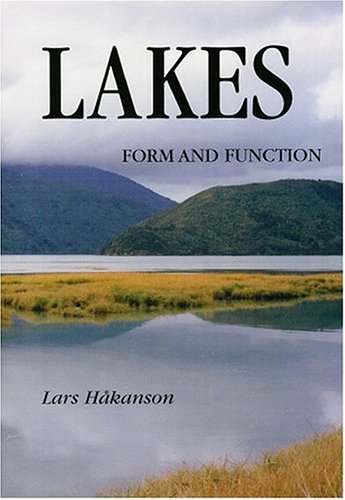
(The size and form of lakes regulate many general transpor...)
The size and form of lakes regulate many general transport processes, such as sedimentation, resuspension, diffusion, mixing, burial and outflow. Lakes: Form and Function discusses how much of the variations among lakes in fundamental ecosystem characteristics may be related to lake morphometry, catchment area features, climatological factors and measurement uncertainties. The transport processes regulate many important variables, such as concentrations of phosphorus, suspended particulate matter, pH and color. These variables, in turn, affect primary production, which regulates secondary production, for example of zooplankton and fish. This book discusses such relationships using both empirical data and statistical analyses, and mechanistic principles and models. Researchers and students in limnology, as well as consultants and administrators interested in management and studies of lake systems, will enjoy reading this book. Lars Håkanson received his PhD in Physical Geography from Uppsala University, Sweden. He has written several papers and books related to recent sedimentological processes in lakes, rivers and coastal areas, to mass-balance modelling of radionuclides, nutrients and metals, to aquatic foodweb models and to water pollution.
http://www.amazon.com/gp/product/1930665245/?tag=2022091-20
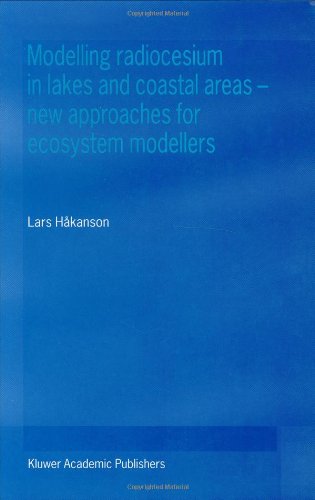
(During the last 10 years, there has been a 'revolution' i...)
During the last 10 years, there has been a 'revolution' in ecosystem modelling. The generality and predictive power of our models have increased in a way that was inconceivable 10 years ago. This book describes a new generation of practically useful models that predict as well as one can measure - if one measures well. And yet, they are driven by readily available driving variables and have a general structure that applies to most types of pollutants in aquatic systems. The major reason for this development is, in fact, the Chernobyl accident. Large quantities of radiocesium were released in April/May 1986 as a pulse. To follow the pulse of radiocesium through ecosystem pathways has meant that important fluxes and mechanisms, i.e., ecosystem structures, have been revealed. It is important to stress that many of these new structures and equations are valid not just for radiocesium, but for most types of contaminants, e.g. for metals, nutrients and organics. This means that the models, methods (of building and testing models) and equations described in this book for lakes and coastal areas should be of great interest also to other ecosystem modellers. This book will be of considerable interest to: students in radioecology, geosciences and biology; environmental engineers; consultants; administrators and scientists interested in the spread, biouptake and ecosystem effects of chemical pollutants in aquatic ecosystems.
http://www.amazon.com/gp/product/0792362454/?tag=2022091-20
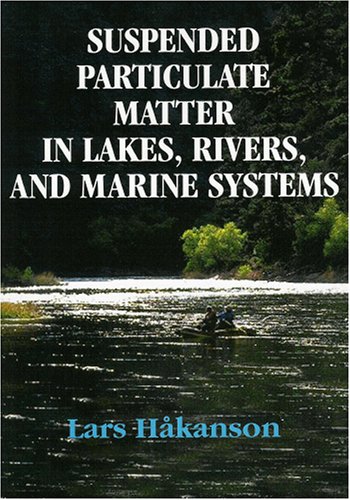
(The aim of this book is to give a state-of-the-art presen...)
The aim of this book is to give a state-of-the-art presentation of suspended particulate matter (SPM) in lakes, rivers and marine areas, with a focus on the roles that SPM plays in aquatic ecosystems and on modelling. To the best of the author’s knowledge, this is the first book of its kind, and this is remarkable because SPM is very important in aquatic sciences. It regulates the transport of all types of water pollutants in dissolved and particulate phases. It regulates water clarity and the depth of the photic zone, and, hence, also primary and secondary production. SPM regulates bacterioplankton production and biomass, and, thus, also mineralization, oxygen consumption and oxygen concentrations. SPM regulates sedimentation and the use of sediments as an historical archive, e.g. of water pollutants. These matters are discussed in this book, which also presents empirical and dynamical models for SPM based on the ecosystem perspective. The aim of these models is to structure existing knowledge on the factors regulating variations among and within aquatic systems of SPM in a rational and quantitative manner. This knowledge is fundamental for an understanding of the function and structure of aquatic systems. This book is intended as a textbook (mainly for Master’s and Ph.D. students) in aquatic sciences, but it should also attract a considerable interest from researchers in limnology, marine ecology and environmental sciences, as well as from consultants and administrators interested in management and studies of aquatic systems.
http://www.amazon.com/gp/product/193284614X/?tag=2022091-20
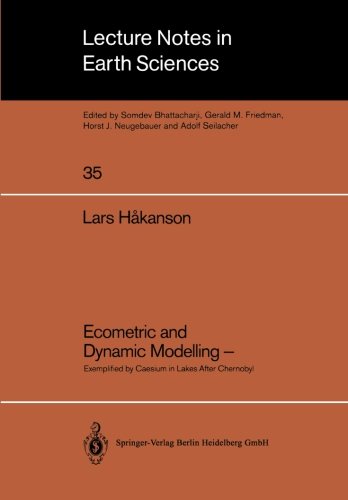
(The accident of Chernobyl enabled the scientific communit...)
The accident of Chernobyl enabled the scientific community to study nuclear fall-out effects in situ establishing new kinds of interpretation methods. This study presents the development of ecometric analysis, mainly based on load diagrammes for entire ecosystems and their interpretation with regard to dynamic modeling. Practitioners and scientists in ecology, environmental sciences, limnology, hydrology and geosciences but also in agricultural and life sciences will profit from this textbook. It is the first book on ecometric modeling. Ecometry is an approach to establish so-called load diagrams (effect-dose-sensitivity diagrams) for entire ecosystems like lakes or defined coastal areas. Central aspects concern statistical relationships and causal relationships, clusters and functional groups of interrelated environmental parameters, area- and time compatible data, benefits and drawbacks with the ecometric approach, and the information value of parameters that vary in time and space. The book uses a new and comprehensive set of data on radioactive caesium in lakes (after the Chernobyl accident) to illustrate the various principles and steps in the protocol to establish load diagrammes. The ecometric approach can be used for most pollutants in different types of ecosystems.
http://www.amazon.com/gp/product/3540539972/?tag=2022091-20
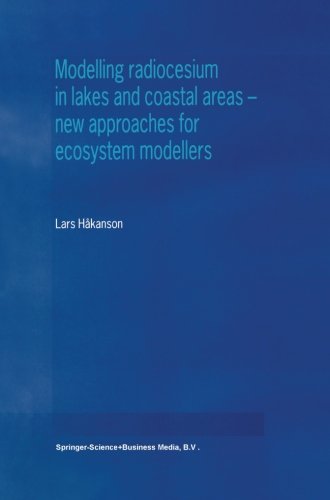
(During the last 10 years, there has been a 'revolution' i...)
During the last 10 years, there has been a 'revolution' in ecosystem modelling. The generality and predictive power of our models have increased in a way that was inconceivable 10 years ago. This book describes a new generation of practically useful models that predict as well as one can measure - if one measures well. And yet, they are driven by readily available driving variables and have a general structure that applies to most types of pollutants in aquatic systems. The major reason for this development is, in fact, the Chernobyl accident. Large quantities of radiocesium were released in April/May 1986 as a pulse. To follow the pulse of radiocesium through ecosystem pathways has meant that important fluxes and mechanisms, i.e., ecosystem structures, have been revealed. It is important to stress that many of these new structures and equations are valid not just for radiocesium, but for most types of contaminants, e.g. for metals, nutrients and organics. This means that the models, methods (of building and testing models) and equations described in this book for lakes and coastal areas should be of great interest also to other ecosystem modellers. This book will be of considerable interest to: students in radioecology, geosciences and biology; environmental engineers; consultants; administrators and scientists interested in the spread, biouptake and ecosystem effects of chemical pollutants in aquatic ecosystems.
http://www.amazon.com/gp/product/9401738572/?tag=2022091-20
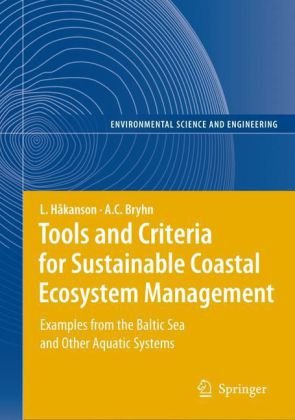
( The aim of this book is to discuss practically useful (...)
The aim of this book is to discuss practically useful (operational) bioindicators for sustainable coastal management, criteria for coastal area sensitivity to eutrophication and an approach set a "biological value" of coastal areas. These bioindicators should meet defined criteria for practical usefulness, e.g., they should be simple to understand and apply to managers and scientists with different educational backgrounds. Central aspects for this book concern effect-load-sensitivity analyses. One and the same nutrient loading may cause different effects in coastal areas of different sensitivity. Remedial measures should be carried out in a cost-effective manner and this book discusses methods and criteria for this. Remedial strategies should generally focus on phosphorus rather than nitrogen because the effects of nitrogen reductions can rarely be predicted well and nitrogen reductions may favour the bloom of harmful cyanobacteria. Three case-studies exemplify the practical use of the bioindicators and concepts discussed in the book. The first concerns how local emissions of nutrients affect the receiving waters when all important nutrient fluxes are accounted for. The second concerns how to find reference values for "good" ecological status to set targets for remedial actions. The third gives a reconstruction of eutrophication. If the development during the last 100 years can be understood, key prerequisites to turn the development would be at hand. This book should attract considerable interest from researchers in marine ecology, consultants and administrators interested in management and studies of coastal systems.
http://www.amazon.com/gp/product/354078361X/?tag=2022091-20
Hakanson, Lars Hakan was born on April 20, 1943 in Uppsala, Sweden. Son of Karl Yngve and Greta Eleonora (Widen) Hakanson.
Bachelor of Science, Uppsala (Sweden) U., 1966; Master of Science, Uppsala (Sweden) U., 1967; Doctor of Philosophy, Uppsala (Sweden) U., 1972; Doctor of Science, Uppsala (Sweden) U., 1974.
Research scientist, Environmental Protection Agency, Sweden, 1972-1984; professor, Umea (Sweden) U., 1984-1991; professor, Uppsala (Sweden) U., since 1991. Main project leader Environmental Protection Agency, Sweden, 1985-1990.
( The aim of this book is to discuss practically useful (...)
(The aim of this book is to give a state-of-the-art presen...)
(In this context morphology means the study of lake fonns ...)
(The accident of Chernobyl enabled the scientific communit...)
(The size and form of lakes regulate many general transpor...)
(Originally published in 1983, this was the first comprehe...)
(Originally published in 1983, this was the first comprehe...)
(During the last 10 years, there has been a 'revolution' i...)
(During the last 10 years, there has been a 'revolution' i...)
Chairman International Atomic Energy Agency-United Nations Agency in Vienna, since 1988. President International Association Sediment Water Science, 1990-1993.
Married Lena Birgitta Si+338ström, March 20, 1971. Children: Karl Hakan, Nils Sture, Lars Olof.
